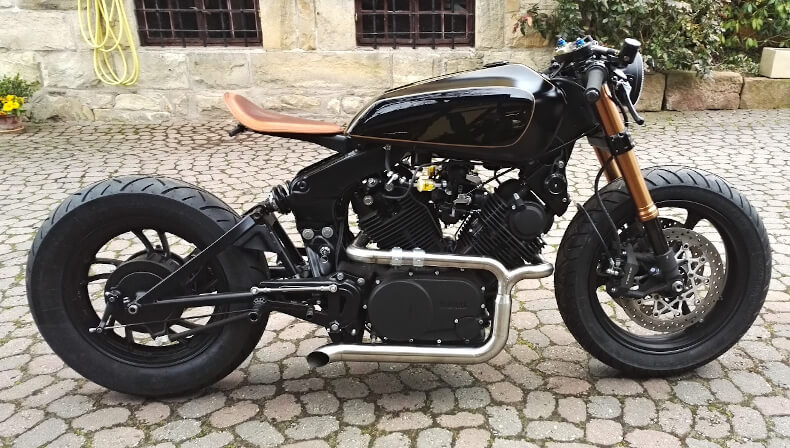Einen Moment bitte
Anfrage Erfolgreich
Wir senden Ihnen zeitnah ein Angebot!
18 Oct 2020
Stubby handlebars, single seats and souped-up engines with open mufflers and other spare parts are replaced. Cafe racers belong to one of the most influential motorbike movements in history. With their simplicity, they convey pure riding fun and were the inspiration for many models of all motorbike manufacturers. The Fire Chairs have their roots in North London in the 1950s. The rock’n’roll youth met every Saturday night at restaurants on the edge of the highways, such as the legendary “Ace Café”. To briefly escape the frustration of the post-war period, they held races on the open road, from the café to the nearby roundabout and back again. The big goal was to beat the challenger and get as close as possible to the magic 100 miles per hour (about 160 km/h), or “a ton”.
The government’s austerity measures for reconstruction were still being felt and the young racers were short of cash. So they resorted to motorbikes that were left over in masses from wartime and could be had cheaply. The engine was souped up, everything unnecessary was dismantled to save weight and a streamlined humpback seat and stub handlebars were installed. So the so-called “Ton-Up Boys” chased up and down the streets in Levis jeans and leather jackets in a crouched position.

In 2005, cafe racers in Germany really took off with the biker meeting “Glemseck 101” near Stuttgart. The meeting is now one of Europe’s largest and welcomes all types of motorised two-wheelers. However, it had its origins as a pure cafe racer meeting.
In keeping with the spirit of the time, the most popular base models for conversions today are those that are currently available on the market at low prices. At the moment, these are mainly models from the 1980s, such as Honda CBs, the Yamaha XV series or BMW R80/100s.
Such complete conversions can usually be roughly divided into 2 categories. There are purists who build their machines as true to style as possible according to the models of past times. This means spartan equipment, as little weight as possible, no electronic aids and an almost reclining riding position thanks to M handlebars and footrests that are moved back. However, this usually affects riding safety and comfort. So many enthusiasts go the other way and try to keep their bike looking as true to the original as possible. Modern upgrades also make the bikes safer and more comfortable to ride, and thus more suitable for everyday use.

Many manufacturers now offer parts for precisely these purposes. Very popular, for example, are so-called “push-button controls”. They replace most fuses and relays and reduce the large original wiring harness to a minimum. In addition, they can give the retro machines modern features such as immobilisers and even Bluetooth. In combination, there are matching mini fittings and space-saving lithium batteries. This way, the entire electrical system can be brought up to contemporary standards without compromising the original minimalist look. If you also don’t want to do without a more modern riding experience and large disc brakes, you can replace the front fork and rear suspension with those of a newer model, thanks to conversion kits for numerous models.
Many manufacturers such as Triumph, Moto Guzzi, Royal Einfield and BMW pay tribute to the cafe racers. With new models inspired by the modified production bikes of the 50s and 60s, they do without exaggerated engine power and electronics. With spoked wheels and as little plastic cladding as possible, the retro charm earns sympathy points with everyone who sees them and conveys a very special riding experience.
Feel free to visit our other articles on the subject of 3D printing and reconstruction for vintage and classic cars.